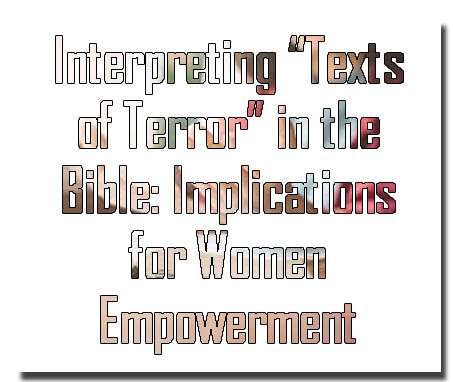

Embracing the Role of the Suffering Servant-A Christmas Challenge
Dr. M. Mani Chacko
The phrase “Suffering Servant” is tied up with the Servant songs (also called the Servant poems or the Songs of the Suffering Servant) in the Book of Isaiah. These songs were first identified by Bernhard Duhm in his 1892 commentary on Isaiah. The songs are four poems written about a certain "Servant of YHWH." God calls the Servant to lead the nations, but the Servant is horribly abused among them. In the end, he is rewarded. The Servant Songs are found in Isaiah 42:1 – 9; Isaiah 49:1–13; Isaiah 50:4 –11; and Isaiah 52:13 - 53:12.Some scholars regard Isaiah 61:1-3 as a fifth servant song, although the word "servant" is not mentioned in the passage.
The identity of the “Servant” has been an issue in Biblical scholarship. According to St. Mathew, the servant is none other than Jesus Christ, the Messiah. He endorses his view point by citing the same text in Mathew 12:15-21. According to some others, the “Servant” is an historic individual; yet others would say the “Servant” is a community and not an individual. The concern in this short reflection is not to dwell on the identity of the “Servant” but rather to discover the qualities of the “Servant”, which our Lord Jesus Christ so beautifully represents so that the image of the “Servant” becomes a model and a source of inspiration to us today.
A. CHARACTERISTICS OF THE SERVANT
Isaiah 42:1-4 describes the characteristics of the “Servant”. The prophet sees a time of hardship and suffering for the people of Israel. He tells the people that they will be taken as captives to a foreign land and will be subject to pain. They will experience spiritual emptiness; crisis of identity and fear of the future. In this context, the prophet talks about the “Servant” who will intervene on behalf of them who are crushed and who will not rest until he has established justice and peace in the earth. The text begins with the phrase “Behold the Servant”. It is an invitation to behold the “Servant” as to what he stands for and not simply to look at the “Servant”. It is an invitation to perceive the “Servant” and to discover him so that they are encouraged by the presence and the advent of the “Servant”. This experience of beholding the “Servant” is mandatory for us today in order to be a “Servant” in bringing about justice and peace in contexts of injustice and violence. In this experience of beholding, four qualities or characteristics of the “Servant” can be noted which we could appropriate and act upon in our engagement in God’s mission:
Firstly, the person who is introduced in the text is a “Servant”. He is not a slave. Rather he is a servant. The term “Servant” is a dignified and powerful terminology because the servant is one who values relationships and is always there especially where there is suffering and hardship. He does not act as a master or as a task master despite the fact that he is the master. He is one who has got the power but does not misuse power in the exploitation of the other. Rather for him, power is a means for service. The “Servant” in the text is described as one who is chosen and in whom God the Father delights. The “Servant” only said and did what came from the Father and he could not be distracted from this. He could not be distracted by praise, by fear or by temptation. He is one who has offered completely into God’s hands to carry out God’s purposes and therefore God delights in him.
Secondly, the “Servant” is one who is only interested in the Message and not in himself, the Messenger. The “Servant” is not a show man to gain name and fame. It is described that he will not cry out or raises his voice or makes his voice heard in the street. Mathew identifying the “Servant” with Jesus citesthe passage from Isaiah and affirms with the prophet that Jesus the “Servant” was not there to whip up a crowd for popularity. He never, ever drew attention to himself, put on a show or tried to please the masses. He was there solely to do the will of God. The “Servant” is only interested in the message and not in himself as the messenger. This is a warning and a reminder to us today.
Thirdly, the “Servant” is one who has a perspective, a preferential option for the poor and the marginalized. He ministers to “bruised reeds and smoldering wicks”. The reeds grow by the river side and one of the things that the reeds were useful for is that they made good flutes. The Israelites would actually cut them down, hollow them out and make flutes out of them. If they came across reeds that were cracked or bruised they would just break it in half and toss it away. They look for reeds of a certain quality in order to make a flute that would play well. Cracked or bruised reeds were worthless. But this is not the case with the servant. He sides with and looks for the bruised reeds. The other image that is used is of dimly burning wick or smoldering wick. The Hebrew homes did not have electric lights. They had to light their homes with oil lamps. Most had open tops and the bowls were filled with oil and they contained a wick made of flax or linen and as long as the wick stayed moist with oil it would burn. But occasionally when the oil would burn out the wick would smolder and burn and give off smoke and the only thing to do was to extinguish it and toss it away as there was plenty of flax where the first wick had come from. Again, this is not what the “Servant” does. He does not throw smoldering wicks away or put them out.
Fourthly, the “Servant” is one with a clear vision and a firm determination. The prophet says that the “Servant” will not be disheartened or crushed until he has established justice in the earth. He is one with a clear vision to build up a new world order marked my justice and peace and he is firm in his determination to achieve the goal. There will never come a time when the “Servant” will give up his task. The “Servant” is in the business of restoring bruised reeds and smoldering wicks, many of whom the society had totally given up. He is unique in his endurance. In Mathew’s words, Jesus the “Servant” will not give up. He will not back down. There will come a day when the Reign of God will be fully established where justice and peace become the experience of all. Till then the “Servant” will continue his ministry of liberation.
B. THE SUFFERING SERVANT: ITS IMpLICATIONS FOR THE CHURCH TODAY
There are three major implications for us as a Church when we reflect on the image of the “Suffering Servant”.
Firstly, there is the need to redefine and rediscover the identity of the Church. The Church is not a club for socialization. The Church is not a meeting point to make friendships and establish relationships. The Church is not a body for the elite alone but for all. The Church is the “Servant” of our times, marked by the realization that the Church is a “Servant” committed to the Servant Lord, Jesus Christ. If this is so,the sole mission of the Church is to stand for the values of the Servant Lord, the values of justice and peace. If the Church is truly a “Servant”, then there is no room for the promotion of personal agenda. There is room only for the promotion of the values of the Reign of God. The “Servant” will not brag or boast. Rather the “Servant” will silently, unassumingly be engaged in establishing justice and peace on the earth. The “Servant” will not be disheartened or crushed till the goal of establishing a just and peaceful order is achieved.
Secondly, there is the need to redefine who God really is. Influenced by Hebrew and Greek thought many Christian traditions have constructed images of God in dualistic and hierarchical ways. Consequently, we have come to imagine God as an incomprehensible and all powerful being and this all powerful God is present everywhere, up there, beyond the realms of life here on earth. We have come to believe that God cannot be related to the material world because the world is created out of matter and therefore evil. We construct images of God metaphorically. We perceive God in terms of power and perfection as Ruler, Lord, King, Master, Warrior etc. We need to rediscover that our God is God Incarnate; that God belongs to the earth and reveals himself/herself as a person. In Incarnation, God does not remain remote and abstract in the world. Rather God is engaged fully with the vulnerable and the suffering masses enabling them to experience the salvific gift of life in all its fullness. God is a “Servant” God committed to serve the other and not to be served.
Thirdly, there is the need to redefine what the Mission of God really is.The image of the “Servant” challenges us to review our understanding of the Mission of God. Engagement in God’s Mission challenges us to go beyond the human to the entire creation of God. Justice and Peace are not for a life of prosperity but for creation of conditions so that human life and God’s entire creation may have the possibility of life, here and now and beyond. Justice to creation becomes central to peace, human dignity and fullness of life. Witness to the God of Life is incomplete without resistance for justice and believing in the God of Life is to participate in life- giving activities. Mission of God is nothing but being in Solidarity with the victims of exploitation, violence and war. If the Church is to truly play the role of a “Servant”, then we have to abandon idealistic views of justice and peace and locate these values of the Reign of God within social structures and resist or develop values collectively for the liberation of the victims so that life in all its fullness would become a reality for all.
Conclusion
The image of “Servant” calls us to go beyond our own comfort zones and be in solidarity with the struggles of peoples and communities and individuals- with the people of Bangladesh in their struggles against brutality and climate injustice; Bhutan in their struggle to affirm identities; India in their fight to eradicate in human practices such as caste and corruption; Maldives , in their struggle for climate justice and democratic governance; Myanmar, in their quest for democracy and nationhood; Nepal , in their search for peace and reconciliation; Pakistan, in their struggle against growing religious intolerance, persecution against religious minorities.
To conclude, the three powerful biblical images which the Sri Lankan Theologian Aloysius Pieris suggest warrant our attention:
A Home with One Table, where gifts of creation are enjoyed together by all its inhabitants, where some do not gorge while others starve (I Corinthians 11:21);
A Temple of Worship and a House of Prayer where mammon is given no chance to turn it into a “Den of Robbers” (Luke 19:46);
A Garden of Delight where Creation remains the enjoyable icon of the Creator and of the Created (Genesis 3:1ff.)
The above images reiterate the fact that we live in this planet not alone, but with other creatures created by God and together the world is our home. How can we live peacefully and with justice will depend on how we are able to appreciate each other despite the differences of creatures and how far we realize that all creatures are interconnected in a web of life and therefore interdependent. It is up to the Church, the “Servant”, which means all of us to make it happen.That indeed is the call and the challenge which the “Servant” God bestows upon the Church, the “Servant”today.

